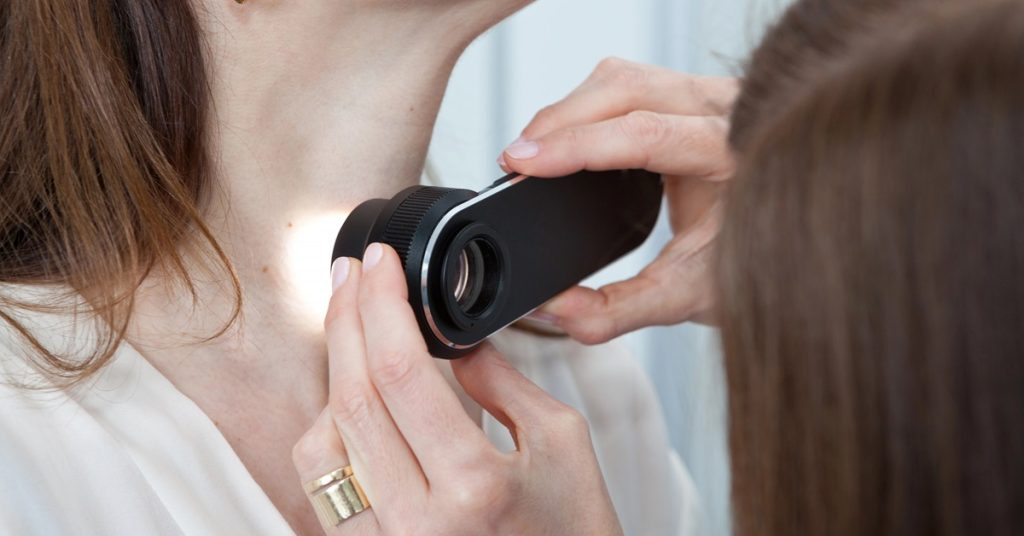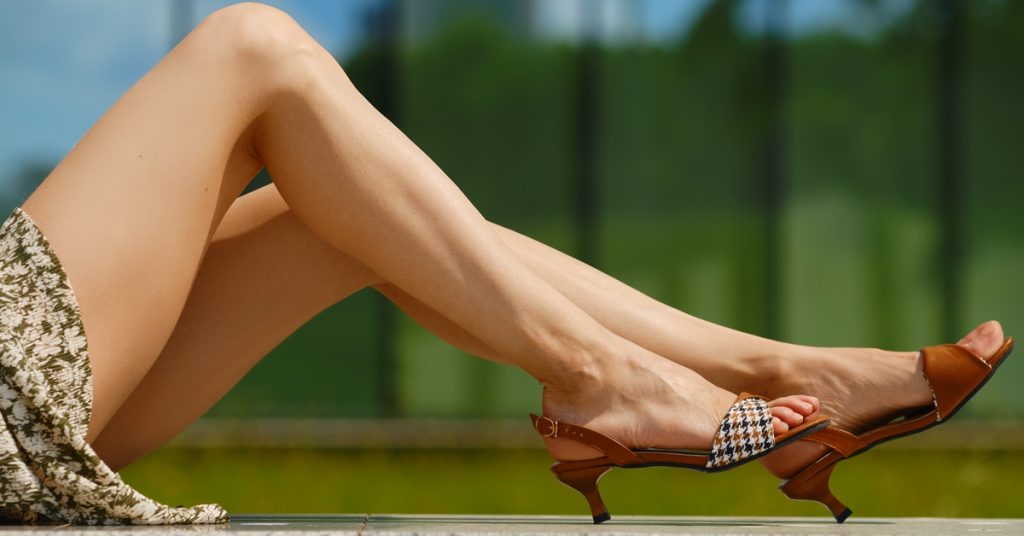The Marietta Aesthetician’s Guide to Dermaplaning

Welcome to the Marietta Aesthetician’s Guide to Dermaplaning. In this comprehensive guide, we aim to demystify the process of dermaplaning, a popular skincare procedure known for its ability to create a smoother, brighter complexion. Whether you’re an aesthetician seeking to refine your skills or simply a skincare enthusiast looking to understand more about this treatment, we hope this guide will prove to be an invaluable resource. We’ll delve into the procedure’s benefits, the tools required, and the step-by-step process to ensure a safe and effective dermaplaning experience. So let’s embark on this journey toward achieving radiant, healthy skin.
What is dermaplaning?
Dermaplaning is an exfoliation process that involves using a scalpel-like tool to gently scrape away layers of dead skin cells and facial hair. This process is done in a gentle, sweeping motion that helps stimulate collagen production while removing any debris from your face. The result is a smoother, brighter complexion and improved product absorption rates. By removing this outer layer of the epidermis, dermaplaning helps reduce the appearance of fine lines and wrinkles while creating a smoother complexion. This method can also help reduce acne scars, pigmentation, and other skin blemishes.
What are the benefits of dermaplaning?
Dermaplaning has numerous benefits, including:
- Removing dead skin cells and facial hair that can cause breakouts and block pores.
- Improving the absorption of skincare products by up to 40%.
- Stimulating collagen production, which can help reduce the appearance of fine lines and wrinkles.
- Promoting a brighter, smoother complexion.
- Creating a more even skin tone by reducing pigmentation.
What should you expect when getting dermaplaning?
During your appointment, an aesthetician will use a sterile scalpel to gently scrape away dead skin cells and facial hair. The process is pain-free and should take about 30 minutes, depending on the amount of skin being treated. After the procedure, your skin may feel slightly sensitive or dry for a few days, but this can be easily remedied with a gentle moisturizer.
What is the dermaplaning service like?
At our Marietta-based aesthetic clinic, we offer a comfortable and safe environment for all of our dermaplaning appointments. During your appointment, you can expect to receive personalized care from one of our experienced aestheticians. We understand that everyone’s needs are different, so we strive to create an individualized treatment plan tailored specifically to your skin type and goals. After the treatment, our aestheticians will provide you with post-care advice to ensure that you get the most out of your results.
Are there any other treatments that can complement dermaplaning?
Dermaplaning is a great standalone treatment, but it can also be combined with other services for even more dramatic results. For example, many of our Marietta patients choose to get a chemical peel after dermaplaning to help reveal a brighter complexion. Additionally, we offer facial treatments such as microneedling that can further refine the skin’s texture and tone.
Does dermaplaning help reduce acne?
Yes, dermaplaning can help reduce acne by removing the top layer of dead skin cells and facial hair that can cause breakouts Additionally, the exfoliating and resurfacing effects of dermaplaning can help clear out clogged pores and promote cell turnover for a healthier complexion. However, if you have active acne it’s important to talk with one of our experienced Marietta-based aestheticians before getting any dermaplaning treatments as certain conditions may not be suitable for this type of treatment.
Can dermaplaning help improve skin texture?
Yes, dermaplaning can help improve the overall texture of your skin. By removing the top layer of dead cells and facial hair, dermaplaning can reveal a brighter complexion and smooth out any rough patches or unevenness. Additionally, the exfoliating effects of dermaplaning can help promote cell turnover for a healthier complexion. Talk with one of our experienced Marietta-based aestheticians to find out if dermaplaning is the right treatment for you.
How often should you get dermaplaning?
Generally, it’s recommended to get dermaplaning every three to four weeks. However, this timeline can vary depending on your skin type and needs. It’s important to talk with one of our Marietta-based aestheticians before getting any dermaplaning treatments so that they can determine the best timeline for your situation.
Are there any risks associated with dermaplaning?
Dermaplaning is generally considered a safe procedure, but there are still some risks that you should be aware of. For example, if the scalpel is not properly sterilized or used too aggressively, it can irritate or even cut the skin. Additionally, dermaplaning can make your skin more sensitive to sunlight, so it’s important to use sunscreen when going outside afterward.
Are there any side effects of dermaplaning?
Dermaplaning is generally considered a safe procedure with minimal side effects. However, some patients may experience slight redness or sensitivity immediately after the treatment because of the removal of dead skin cells. This should go away within a few days and can be managed with a gentle moisturizer. Additionally, it’s important to note that dermaplaning makes your skin more sensitive to sunlight, so sunscreen should be worn when going outside afterward.
How do you know if dermaplaning is right for you?
The best way to determine if dermaplaning is right for you is to speak with one of our experienced Marietta-based aestheticians. Our team can evaluate your skin type and needs to determine if dermaplaning is the right treatment for you, as well as provide advice on how to maintain your results.
What should you do after getting dermaplaning?
After dermaplaning, your skin may feel slightly sensitive or dry, so it’s important to use a gentle moisturizer to keep the area hydrated. Additionally, you should avoid picking at or scrubbing your face as this can irritate the newly exposed skin and undo all of the benefits of dermaplaning. Lastly, don’t forget to apply sunscreen whenever going outside to protect your skin from sun damage.
What is the difference between dermaplaning and microdermabrasion?
The primary difference between dermaplaning and microdermabrasion is that dermaplaning focuses on removing the top layers of dead skin cells and facial hair while microdermabrasion goes deeper into the skin to exfoliate and promote cell turnover. Dermaplaning is a gentler treatment option for those who have sensitive skin or are looking for superficial results, while microdermabrasion is a more intense treatment that can deliver deeper exfoliation and rejuvenation. Ultimately, the right choice will depend on your skin type and desired results.
How is dermaplaning different from a chemical peel?
Dermaplaning is a physical exfoliation procedure that uses a sterile scalpel to gently scrape away dead skin cells and facial hair, while chemical peels use an acid-based solution to dissolve the top layer of skin. Dermaplaning can be used on its own or in combination with other treatments such as chemical peels for deeper results. Additionally, dermaplaning is a much gentler treatment, so it’s a great option for those with sensitive skin or who are looking to maintain their results.
Are there any age restrictions on getting dermaplaning?
There are no age restrictions on getting dermaplaning as long as you don’t have any active skin conditions such as acne. However, it’s important to talk with one of our Marietta-based aestheticians before getting any dermaplaning treatments so that they can determine the best course of action for your situation.
Can dermaplaning be done at home?
Dermaplaning is a specialized procedure that should only be performed by a trained professional. DIY treatments can be dangerous and may not yield the desired results. The best way to get long-lasting results from dermaplaning is to have it done in person by one of our experienced Marietta-based aestheticians.
Are there any ways you can maintain my dermaplaning results?
There are several things you can do to maintain the results of your dermaplaning treatment. First, make sure to use a gentle moisturizer daily to keep the area hydrated. Additionally, use sunscreen whenever going outside to protect your skin from sun damage and avoid picking at or scrubbing your face as this can undo all of the benefits of dermaplaning. Lastly, for best results, schedule follow-up treatments with one of our Marietta-based aestheticians every few weeks.
In conclusion, dermaplaning offers a multitude of benefits, from revitalizing your complexion to enhancing the effectiveness of your skincare products. It’s a safe and minimally invasive procedure that caters to a wide variety of skin types and conditions, delivering radiant and youthful-looking skin.
It’s important to entrust your skin to the experts, hence our team of highly skilled aestheticians in Marietta is committed to providing you with a personalized experience that prioritizes your skin’s health and beauty. Make the decision today to invest in your skin’s future and experience the transformative power of dermaplaning. Contact us to schedule your dermaplaning consultation at our Marietta office and take the first step toward achieving your skin goals.
Sources:DermaPlanePro, Cleveland Clinic, Springer 1, Springer 2, Wiley Online Library, ROCOL, ETSU Digital Commons, LWW Journals, Springer 3



